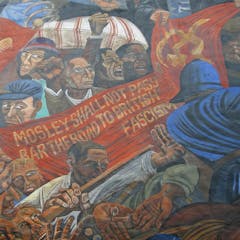
Articles on Antifa
Displaying all articles

The culture wars have been around forever, but keep taking new forms, and US variants threaten to spill over to Australia – as seen in the recent (overturned) ban on same-sex parenting books in Sydney.

This is the story of how music became a battleground in the 1980s and 1990s, as antifascists fought fascism with guitars and microphones.

Addressing American domestic radicalism will require new ways of thinking about the nation’s problems, and new ways of solving them.

Mimicking other groups and making false claims of responsibility are popular deception tactics used in terrorism.

The anti-fa movement gained momentum in the United States following the election of Donald Trump. However, its members do not constitute a threat in the sense of the American president.

Are the conditions ripe in the US for violence before, during or after the presidential election?

Left-wing terrorism had its heyday in the 1960s-80s, and though some threats remain today, groups like Antifa are known more for low-level violence, not significant terrorist actions.

Legally designating domestic extremist groups as terrorist organizations – as some in the US advocate now – will have limited benefits, if any at all.

The anti-fascist movement is a decentralized collection of individual activists who mostly use nonviolent methods to achieve their ends.

Stan’s remake of the 1992 film Romper Stomper swaps skinhead culture for the complexities of contemporary Australian extremist politics. In doing so, it highlights disillusion with mainstream politicians and media.

We have an ethical obligation to stand against fascists and racists in a way that doesn’t help them.
